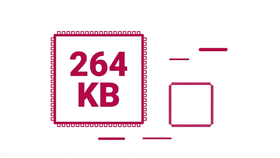摘要:本文主要探讨圆珠笔与防爆现场检测的差异。从数据分析和设计导向的视角出发,文章深入解析两者在功能、应用场景及原理上的不同。理论研究部分详细说明了圆珠笔作为日常书写工具的简单实用,而防爆现场检测则涉及复杂的技术和严格的操作流程,以确保安全。两者在设计和使用上存在着明显的区别。领航款27.73.18为这一研究提供了具体的数据和视角。
In the realm of technology and innovation, the need for precise tools and methods to ensure safety and security is paramount. In this context, the differences between a simple ballpoint pen and the complex task of防爆现场检测 (explosives detection at sites) become apparent. This article aims to explore these differences through the lens of data analytics and design orientation, with a focus on the innovative technologies employed in the latter.
Firstly, let's consider the ballpoint pen. It is a simple writing instrument that has been in use for decades, evolving with time to become more efficient and user-friendly. Its primary function is to facilitate the recording of information through writing. It is a tool that is widely used in various fields, from education to professional work, to document ideas, thoughts, and information.
On the other hand,防爆现场检测 involves high-tech equipment and sophisticated methods to detect explosives and other hazardous substances at various locations. This may include airports, public events, critical infrastructure, and other sensitive areas. The purpose of this detection is to ensure the safety of people and property by preventing any potential threats.
Now, let's bridge the gap between these two concepts by looking at how data analytics and design orientation play a role in both.
In the case of ballpoint pens, design orientation focuses on creating a product that is not only functional but also user-friendly. The design process involves understanding the user's needs, preferences, and usage patterns to create a pen that is comfortable to write with, has good ink flow, and is durable enough to withstand regular use. Data analytics plays a role in understanding consumer behavior and market trends to ensure that the design meets the evolving needs of users.
On the other hand, in the case of防爆现场检测, data analytics and design orientation are crucial for creating efficient and effective detection systems. The design process involves creating systems that can detect explosives quickly, accurately, and reliably in different environments. This requires an understanding of the latest technologies, methodologies, and research in the field to create a system that is not only efficient but also user-friendly for the personnel who use it.
Data analytics plays a pivotal role in this process. It helps in analyzing vast amounts of data collected during detection operations to identify patterns, trends, and potential weaknesses in the system. This information is then used to refine the system's design and improve its efficiency and accuracy. Furthermore, data analytics helps in identifying areas where further research and development are needed to enhance the system's capabilities.
Moreover, with the advent of AI and machine learning,防爆现场检测 systems are becoming more intelligent and autonomous. These technologies help in detecting threats more efficiently by analyzing real-time data and making decisions based on pre-set parameters and algorithms. This ensures that even in complex environments, where human operators might face difficulties, AI-powered systems can detect threats accurately and quickly.
In conclusion, while a ballpoint pen and防爆现场检测 may seem vastly different at first glance, both are integral parts of our society's functioning. The design orientation and data analytics employed in both fields aim to improve their efficiency and usability. However, the complexity and criticality of防爆现场 detection systems make them a focal point for innovation and research, ensuring our safety in an increasingly dynamic world. The intersection of technology and innovation in these fields offers immense opportunities for further advancements in ensuring safety and enhancing productivity.




 黔ICP备2023006899号-1
黔ICP备2023006899号-1 黔ICP备2023006899号-1
黔ICP备2023006899号-1
还没有评论,来说两句吧...